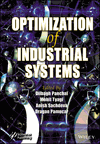Optimizing Volume of Helical Compression Spring by Genetic Algorithm and Comparing with Simulated Annealing
Summary
Springs are machine elements that deflect when load is applied and return to its original position by giving back the energy that is stored during deflection. The controlled deflection of springs is required in various machine applications to control the force or torque applied. The springs deflect in proportion to the load applied to the spring. These are used to absorb vibration and shock in shock absorbers of cars, railways and other machineries. The springs are generally produced in very large numbers, so the optimum quantity of material used in manufacturing becomes the most essential parameter to take into consideration. Having less weight or volume and maximum energy storage capacity is the prime objective in specific engineering applications. Taking the volume of helical compression springs to be objective function of a binary genetic algorithm and simulated annealing is applied in order to optimize the volume. Volume, as a function, has three variables which are mean diameter of coil, number of active turns, and wire diameter of the spring. The axial deflection of one end and shear stress developed in the spring are the two non-linear constraints. A comparison between the solutions obtained from a binary genetic algorithm (GA) and simulated annealing (SA) is done. Different materials are used to manufacture the springs according to the application. The most commonly used materials for springs are oil tempered wire, music wire, and chrome vanadium steel. It is found that the optimized values obtained from GA are 4.61%, 7.69%, and 10.59% less than the optimized values obtained from SA in the case of AISI 1065, AISI 1085, and AISI 6150, respectively.



